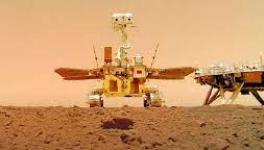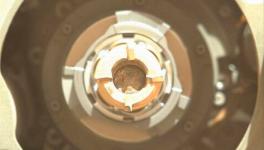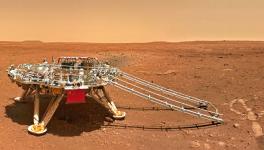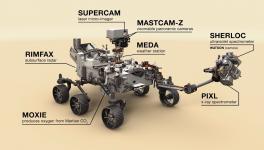Mars Missions: UAE and China Successfully put Spacecrafts into Martian Orbit
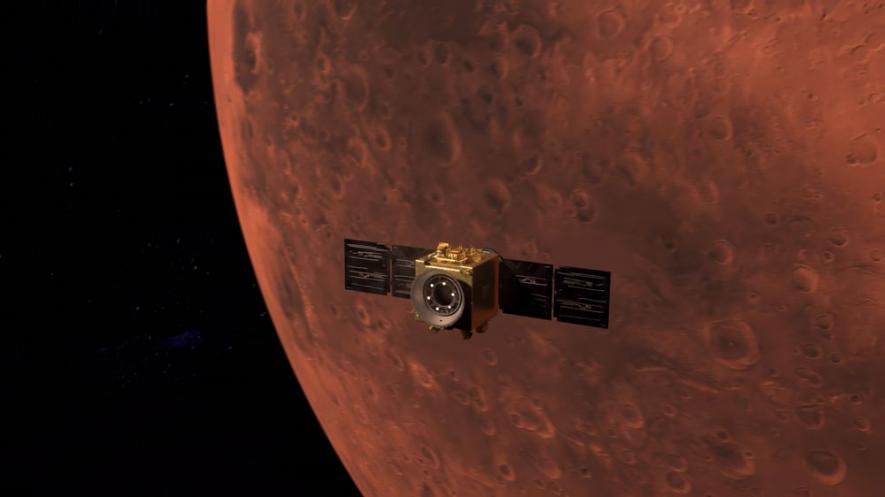
Image Courtesy: UAE Space Agency
Two space missions have successfully seen their spacecrafts in the Martian orbit this week, one by the United Arab Emirates (UAE) and the other by China. The ‘Hope’ spacecraft belonging to the UAE mission entered Mars orbit on February 9 at around 16:00 UTC.
The Hope spacecraft travelled for seven months in space before reaching Mars’ orbit after being launched on July 20, 2020. Before entering Mars’ orbit after having reached near the planet, Hope had to travel 494 kilometers along with about 600 kilometers of risky areas. The most contentious area is behind it now, however, and the spacecraft is well into its desired orbit now. The craft is now in an elliptical orbit; the wide elliptical orbit makes the UAE mission special. Three instruments on the spacecraft — a high resolution imager, infrared and ultraviolet spectrometers will enable the mission to create a global map of Mars’ weather. The wide elliptical orbit helps the craft in attaining this objective.
The UAE mission plans on observing every geographical region of Mars once in nine days throughout the day. Data received by the craft will be processed and then made available to the global scientific community. The first tranche of data is expected to be released by September this year, according to Sarah Al Amiri, the deputy project manager of the mission. The data will help scientists analyse the planet’s atmosphere.
The second craft launched by China arrived at the planet successfully on February 10 at around 8:00 pm according to Beijing Time, a day after the Hope spacecraft made it successfully.
The Tianwen 1 spacecraft by the Chinese mission is now orbiting Mars and is expected to drop a lander and a rover on the surface of Mars within three months if everything goes as planned. The Chinese mission aims to explore the geology of the red planet along with its soil characteristics. The mission will also look for water and ice on the planet.
Tianwen has seven scientific instruments which will take images with higher precision in and around the landing region named Utopia Planitia. The Utopia Planitia is a flat area of volcanic rock which finds itself in a large basin. This area is also close to the Elysium Mons, one of the planet’s largest volcanoes. This area is also significant as land forms discovered here might be linked to the existence of ice or water.
Li Chunlai, deputy chief designer of the programme, reportedly said: “Successfully reaching Mars’s orbit is one of the mission’s key challenges. But the pressure is still on as the mission prepares to land autonomously on the planet’s northern hemisphere. If the landing is successful, the rover, which carries 6 instruments, will explore the planet for at least 92 Martian days, each of which is equivalent to a full day and 37 minutes on Earth”.
Tianwen 1 will also be a test of the technology at play that would be needed for China’s ambitious Mars projects in the future aiming to send people to the planet, according to David Flannery, an astrobiologist at Queensland University, Australia. China has planned a mission for later this decade in which samples will be taken back to earth.
“The landing site’s flat topography and low solar and cosmic radiation levels, along with its potential for water or ice, make it the sort of place you might think of hosting the first human mission,” Flannery was quoted saying.
Get the latest reports & analysis with people's perspective on Protests, movements & deep analytical videos, discussions of the current affairs in your Telegram app. Subscribe to NewsClick's Telegram channel & get Real-Time updates on stories, as they get published on our website.












